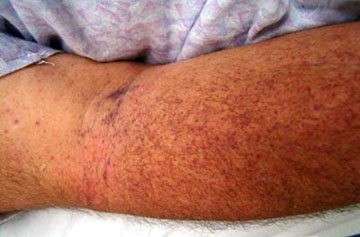
TCM Perspective On
ThrombocytopeniaWhen your blood has too few platelets, mild to serious bleeding can occur. Bleeding can occur inside your body (internal bleeding) or underneath your skin or from the surface of your skin (external bleeding). A normal platelet count in adults ranges from 150,000 to 450,000 platelets per microliter of blood. A platelet count of less than 150,000 platelets per microliter is lower than normal. If your blood platelet count falls below normal, you have thrombocytopenia. In traditional
Chinese medicine, The most common 5 root causes are:
Blood deficiency
Qi deficiency
Spleen deficiency
Blood heat toxin
Blood and Qi deficiency
Western Point of ViewThrombocytopenia is a lower than normal number of platelets in the blood. Platelets are one of the cellular components of the blood along with white and red blood cells. Platelets play an important role in clotting and bleeding. Platelets are made in the bone marrow similar to other cells in the blood. Platelets originate from megakaryocytes which are large cells found in the bone marrow. The fragments of these megakaryocytes are platelets that are released into the blood stream. The circulating platelets make up about two third of the platelets that are released from the bone marrow. The other one third is typically stored in the spleen.
Platelets, in general, have a brief lifespan in the blood (7 to 10 days), after which they are removed from circulation. The number of platelets in the blood is referred to as the platelet count and is normally between 150,000 to 400,000 per micro liter (one millionth of a liter) of blood. Platelet counts less than 150,000 are termed thrombocytopenia. A platelet count greater than 400,000 is called thrombocytosis.
Platelets iparticipate in coagulation. Platelets initiate a sequence of reactions that eventually lead to the formation of a blood clot. They circulate in the blood vessels and become activated if there is any bleeding or injury in the body. Certain chemicals are released from the injured blood vessels or other structures that signal platelets to become activated and join the other components of the system to initiate coagulation. When activated, the platelets become sticky and adhere to one another and to the blood vessel wall at the site of the injury to slow down and stop the bleeding by plugging up the damaged blood vessel or tissue (hemostasis).
It is important to note even though the platelet numbers are decreased in thrombocytopenia, their function often remains completely intact. Other disorders exist that can cause impaired platelet function despite normal platelet count.